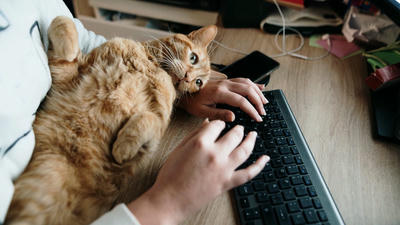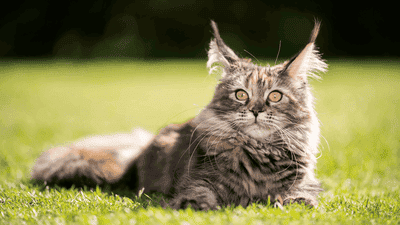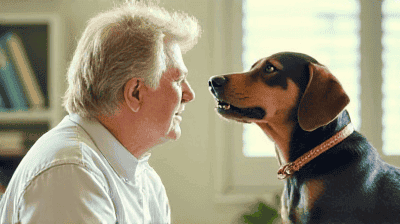Balancing Work and Pet Parenting: Tips for Busy Owners

In today's fast-paced world, many pet owners find themselves balancing the demands of work with the responsibilities of pet parenting. With busy schedules, long work hours, and the unexpected challenges that life can throw our way, ensuring that our pets receive the care, attention, and love they deserve can be a daunting task. However, with careful planning and mindful strategies, it is entirely possible to create a harmonious balance between your professional responsibilities and your role as a dedicated pet owner.
Understanding the Importance of Pet Care
The Role of Pets in Our Lives
Pets play a vital role in our lives. They provide companionship, emotional support, and joy, enriching our hearts and homes. Understanding the value of this bond can motivate busy owners to prioritize their pets despite their hectic schedules.
The Needs of Your Pet
Just like people, pets have needs that must be met for them to thrive. These include:
- Physical Needs: Regular exercise, proper nutrition, and veterinary care.
- Emotional Needs: Love, attention, and social interaction.
- Mental Stimulation: Engaging activities to keep their minds sharp and prevent boredom.
Recognizing these needs is the first step in finding a balance between work and pet care.
Creating a Structured Routine

Establishing a structured routine is one of the most effective ways to create balance in your life as a pet parent. A routine not only helps you manage your time effectively but also provides security for your pet. Here are some steps to create a beneficial routine:
1. Assess Your Schedule
Begin by evaluating your daily and weekly schedule. Identify time commitments for work, commuting, family obligations, and personal time. Recognizing these elements will help you plan your pet’s needs around them.
2. Set Regular Feeding Times
Consistency in feeding times helps regulate your pet's schedule and can prevent behavioral issues related to hunger. Choose specific times that work within your routine.
3. Incorporate Exercise into Your Routine
Plan specific times for exercise each day. This could be an early morning walk before work or an evening play session. Ensure that exercise is a non-negotiable part of your day, just as you would with work meetings.
4. Designate Play and Interaction Time
Set aside time for interactive play with your pet. This could be shorter sessions throughout the day or dedicated periods in the evening. Engaging with your pet in meaningful ways strengthens your bond and fulfills their emotional needs.
Efficient Time Management Strategies
When trying to balance work and pet parenting, effective time management becomes essential. Here are some strategies to help:
1. Prioritize Tasks
Create a daily to-do list that prioritizes your tasks by urgency and importance. Include pet-related tasks alongside your work commitments to ensure nothing is overlooked.
2. Use Digital Tools
Leverage apps and digital calendars to keep track of appointments, reminders, and schedules for both work and pet care. Setting notifications can help you stay on top of pet needs just as you would manage work deadlines.
3. Batch Similar Tasks
Combine similar tasks into blocks of time. For instance, designate a set time for feeding multiple pets, cleaning litter boxes, or preparing pet meals. This can help you complete tasks more efficiently.
4. Delegate When Possible
If you live with others, delegate certain pet care tasks to family members or roommates. Sharing responsibilities not only eases your load but also fosters a collaborative environment.
Incorporating Pets into Your Workday

With the rise of remote work and flexible schedules, finding ways to incorporate your pets into your workday can enhance your productivity and connection. Consider the following strategies:
1. Create a Pet-Friendly Workspace
If you work from home, set up a designated workspace that accommodates your pet. This could involve having their bed or toys nearby so they feel included while you work.
2. Take Breaks Together
Utilize breaks to engage with your pet. Short walks or playtime during breaks can refresh both you and your pet. This not only benefits their exercise needs but also provides you with a mental reset.
3. Involve Pets in Virtual Meetings
If appropriate, include your pet in video calls or virtual meetings. Showcasing your pet can serve as a light-hearted conversation starter and strengthen social connections.
4. Utilize Pet-Friendly Workspaces
When applicable, explore pet-friendly workplaces that allow you to bring your pet to work. Many companies have adopted pet-friendly policies to accommodate animal lovers.
Navigating Long Work Hours
For pet owners with demanding jobs that require long hours or travel, planning becomes crucial to ensure your pet’s well-being. Here are some tips to manage this:
1. Arranging Pet Care Services
Consider employing pet care services if you’re away for extended periods. Options include:
- Dog Walkers: Hiring a dog walker can provide your pet with needed exercise and companionship during the day.
- Pet Sitters: If you work long hours or travel, a pet sitter can provide in-home care, ensuring your pet remains comfortable in their environment.
- Boarding Facilities: Research reputable boarding facilities or pet hotels that provide safe care for your pets when you are away.
2. Establish Consistency
Consistent schedules for feeding, walks, and interaction are vital. If you’re frequently away, train your pet to adapt to a routine that includes visits from caregivers while maintaining their regular schedules.
3. Provide Mental Stimulation
When you are away for long hours, provide interactive toys or puzzle feeders that can keep your pet entertained. This can reduce boredom and anxiety while you are gone.
Engaging Your Pet While You’re Away

Keeping your pet engaged and happy while you’re away at work is crucial. Here are some ideas to make the most of your absence:
1. Rotating Toys
Keep your pet's interest alive by rotating their toys regularly. This creates novelty and excitement, encouraging them to play independently while you’re occupied.
2. Interactive Feeders
Use interactive feeding bowls or puzzle feeders that require problem-solving. This not only provides stimulation but also slows down their eating, benefiting their digestion.
3. Enriching Environments
Create an enriched environment by providing climbing structures, scratching posts, or tunnels for cats. For dogs, consider safe chew toys or engaging activities that can stimulate their minds.
Socializing Your Pet
Socialization is key to ensuring your pet is well-adjusted and comfortable with different situations. Busy owners can still incorporate socialization into their routines:
1. Puppy or Dog Training Classes
Even if you have limited time, enrolling in training classes can offer structured socialization for dogs. This is especially important for young pets who need exposure to various stimuli.
2. Playdates with Other Pets
Coordinate playdates with other pet owners. These interactions help socialize your pet and provide both physical exercise and companionship.
3. Visits to Pet-Friendly Locations
Plan weekend outings to dog parks or pet-friendly cafes. These excursions allow pets to interact and socialize with other animals and people, filling your weekends with rewarding experiences.
Managing Stress for You and Your Pet
Balancing work and pet parenting can be stressful. Taking steps to manage this stress is essential for both you and your furry companion.
1. Practice Self-Care
Make self-care a priority. Set aside time for relaxation, exercise, and hobbies that nurture your well-being. A healthy owner is better equipped to care for their pet.
2. Guide Your Pet through Transitions
Pets can sense when their owners are stressed. When transitioning between work and home life, take a few moments together to decompress. Engage in a calming activity like gentle petting or quiet time.
3. Maintain Consistent Routines
Ensure that routines for both you and your pet remain consistent, as this provides stability and predictability, helping to alleviate stress.
Leveraging Technology
Technology can help busy pet owners streamline care and stay connected with their pets. Here are some useful tools:
1. Pet Cameras
Invest in a pet camera that allows you to check on your furry friend while you’re at work. Many cameras come with two-way audio, so you can talk to your pet and even dispense treats remotely.
2. Automatic Feeders
Consider using an automatic pet feeder to manage feeding times. This ensures your pet receives meals at designated times, even if you’re delayed at work.
3. Apps for Scheduling and Care
Numerous apps can help track your pet’s needs, health records, and care schedules. These tools can serve as reminders for vet appointments, medication, and feeding times.
Building a Support Network
Creating a support network can alleviate some of the pressures of balancing work and pet care.
1. Family and Friends
Involve family members or friends in your pet care routine. Having a reliable support system can relieve stress and give you peace of mind.
2. Local Pet Community
Engage with your local pet community. Joining pet clubs or forums can connect you with like-minded pet owners who can share advice, tips, and even services.
3. Professional Pet Care Services
Don’t hesitate to utilize professional pet care services when required. Whether it’s dog walking, pet sitting, or grooming, investing in these services can help ensure your pet is well cared for.
Understanding Your Pet’s Needs
To maintain a successful balance between work and pet parenting, understanding your pet's emotional and physical needs is essential.
1. Recognize Signals of Stress
Observe your pet's behavior for signs of anxiety or stress, such as excessive barking, destructiveness, or withdrawal. Addressing these issues promptly can help you enhance your pet's well-being.
2. Regular Veterinary Check-ups
Keep your pet's health in check with regular veterinary visits. Preventive care helps you stay ahead of any potential health issues, allowing for peace of mind while you balance work commitments.
3. Tailored Activities
Choose activities based on your pet’s preferences and needs. Some pets may enjoy vigorous exercise while others may prefer snuggling at home. Tailoring your approach helps you strengthen your bond more effectively.
Flexibility and Adaptability
Finally, maintaining flexibility is essential as a busy pet owner. Life can be unpredictable, and adapting to changing circumstances is vital.
1. Adjust Routines When Necessary
Don’t hesitate to modify your routines based on work demands, personal obligations, or your pet’s health. Flexibility allows you to prioritize effectively while keeping your pet’s needs in mind.
2. Be Open to Change
New factors, such as a new job or changes in your pet's life stage, can require adjustments. Being open to change and willing to assess your circumstances regularly can help you maintain balance.
3. Find Joy in Both Worlds
Celebrate both your work accomplishments and the moments you share with your pet. Finding joy in each aspect of your life can ease stress and enhance your overall enjoyment.
Conclusion
Balancing work and pet parenting is undoubtedly challenging, but it is not impossible. With strategic planning, time management, and a loving approach, you can ensure that your pet receives the attention and care they deserve while also meeting your professional commitments.
By establishing routines, leveraging technology, and seeking support from your community, you can create an enriching environment for both you and your pet. Remember that your furry companion relies on you not only for their physical needs but also for emotional support and affection.
Embrace the joy of pet ownership while navigating the complexities of work life. With the right mindset and tools, you can create a fulfilling and balanced life that is rewarding for both you and your beloved pet.








